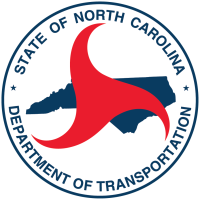I-3306A: I-40 Widening - Orange County
I-3306A: I-40 Widening - Orange County
From I-85 in Orange County to the Durham County Line, the N.C. Department of Transportation is proposing to widen 11.4-miles of I-40 from four lanes to six lanes and modify interchanges, including the I-40 / N.C. 86 interchange. The project will also include temporary pavement markings and overhead lane use sign modifications on I‑40 westbound to remove the existing left lane drop near U.S. 15-501 in Durham County (Project W-5707C). The proposed widening will add one lane in each direction, improve traffic flow along the corridor and help relieve heavy congestion that develops during commuter times.
Purpose and Need
The purpose of the project is to relieve peak hour congestion on I-40 such that a Level of Service (LOS) D or better can be maintained for the 2040 build condition. The project will also improve the traffic flow and continuity between the existing eight-lane section at the beginning of the project (I-85) and the six-lane section at the end of the project (Durham County Line). Daily commuters between points west of I-85 and U.S. 15-501 should also experience fewer delays.
*Level of Service : The relationship of travel demand compared to the roadway capacity determines the level of service (LOS) of a roadway.

October 2025
The concrete batch plant that is located at I-40 and N.C. 86 intersection is operational and producing concrete for the concrete pavement operation.
Over 85,000 cubic yards of concrete have been batched so far.The contractor has installed over 80 drainage pipes under I-40. Due to the presence of rock, numerous runs required a hand tunneling method to be used. Some of the
pipes are as large as 7 feet tall.Work on the I-40 EB bridge over Millhouse Road is ongoing.
The ramps at Old N.C. 86 and New Hope Church Road interchanges will be closed for approximately three weeks for ramp reconstruction.
Only one ramp will be closed a time.
THE TRAVELING PUBLIC SHOULD BE AWARE OF CONSTRUCTION TRAFFIC ENTERING AND EXITING ALONG THE CORRIDOR.
Photos from the Project - October 2025:

Public Involvement
Public Meetings
The first public meeting was held in June 2014.
The second public meeting was held in January 2019.
Public Meeting Comment Summary
Public Meeting Maps
(Updated to show Potential Noise Abatement Areas)
Map 3: New Hope Church Rd Vicinity
PROJECT CONTACT INFORMATION
Malcolm Watson, PE
Project Engineer
NCDOT Design-Build Unit
1595 Mail Service Center
Raleigh, NC 27699-1595
i-40-orange-county@PublicInput.com
Project Phone: 984-205-6615 code: 3714
RESOURCES FOR PROPERTY OWNERS
Although the N.C. Department of Transportation works to minimize the number of homes and businesses displaced by a road project, it is inevitable, in many cases, that a certain amount of private property is needed. The following information explains right of way acquisition and answers questions about the process.
Right-of-Way Brochure Single Page Layout Folleto del Proceso de Adquisición de Bienes Raíces
Right-of-Way Frequently Asked Questions
Right of way Acquisition Process Videos

